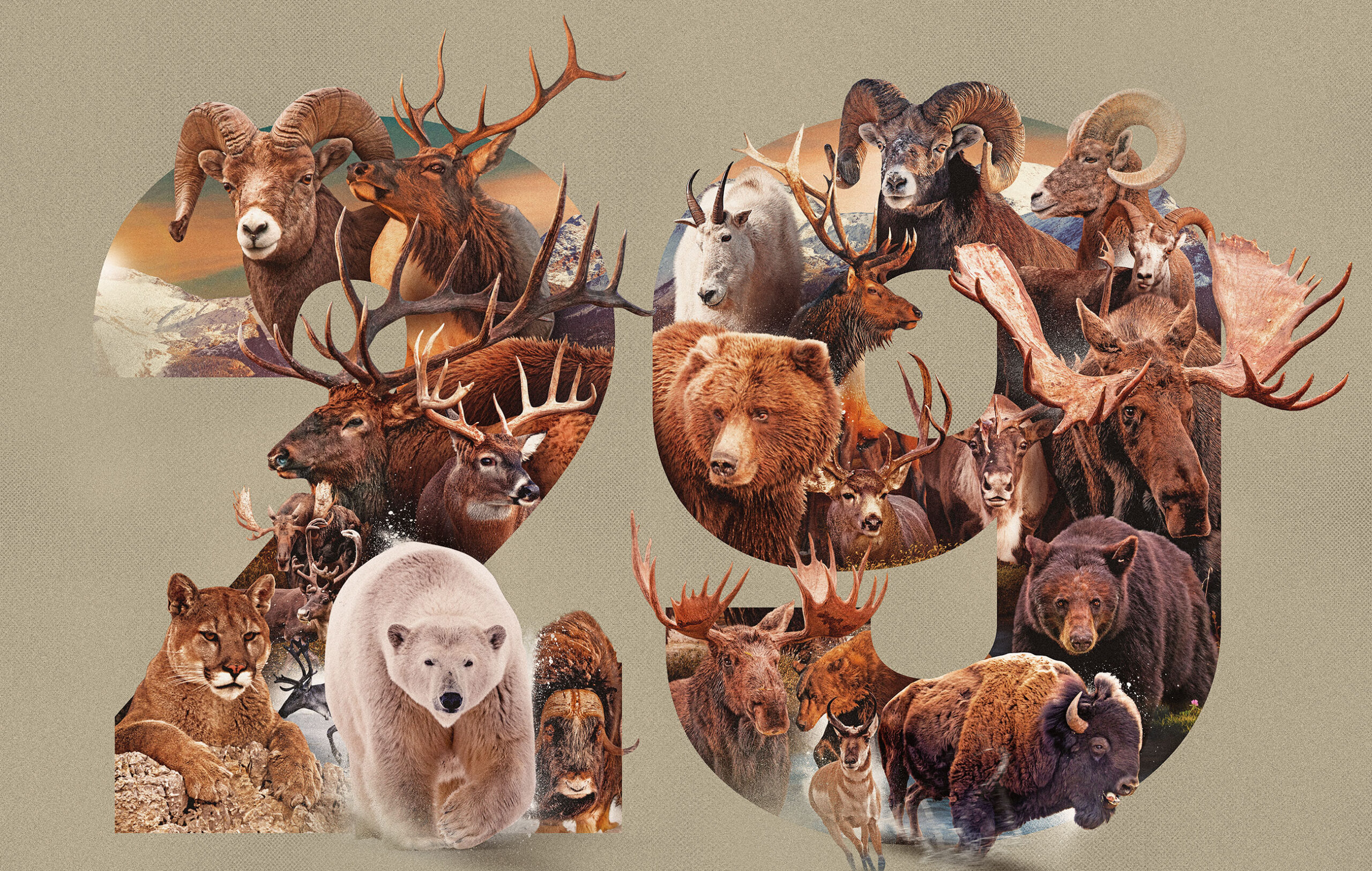YOU MIGHT CALL Dennis Dunn a romantic pragmatist. His romantic side fuels a lifelong love of pursuing wild animals with only a stick and a string. It has motivated his unreasonable quest to harvest all 29 species of big-game mammals in North America. His practical side, though, reckoned that, at 79 years old at the time, he likely didn’t have enough years left to successfully draw a limited bison tag in one of the five states that offer them. So two years ago, Dunn cut the line of unsuccessful applicants and bought at auction what is called the Arizona governor’s bison license, which goes to the highest bidder and gives the holder 365 days to hunt.
Last year, Dunn spent 71 of those 365 days in a ground blind on the North Rim of the Grand Canyon, just a few yards outside Grand Canyon National Park. This is when his romantic side numbed him to the tedium of spending 12 hours every day inside a dark tent, in a straight-backed chair, peering out at the same changeless view for more than 10 weeks.
He read the Bible—all of the New Testament and about half of the Old Testament.He read about Abraham, who at 100 years old begat his son Isaac with the formerly childless Sarah. He read about patient Job, whose faith was rewarded by twice as many riches as were taken from him in a challenge of his resolve. But he didn’t read only about tests of endurance and faith. Dunn also read about the Kaibab Plateau bison herd, and about how the older bulls have become nocturnal since hunting was initiated as a population-management tool.
He knew that any chance to take one with his recurve bow in the daylight hours would be sudden and fleeting. So for those 71 days he somehow remained vigilant and ready, even though he saw bison on only seven of those days.
“I describe it as my 71-day COVID quarantine,” says Dunn, whose pursuit of the North American 29 with instinctive archery gear—no sights or releases or poundage-amplifying cams and none of the pulleys of a compound bow—is detailed in his 2008 book, Barebow!: An Archer’s Fair-Chase Taking of North America’s Big-Game 29.
On day 71, just as he was packing up to leave the blind, Dunn sensed an animal’s approach. An ancient bison bull was walking directly toward his blind, headed for a salt block nine yards from his hide. The bull was facing directly toward Dunn, but when the bison lifted a hoof to turn, Dunn drew his bow, a Whitetail Hawk recurve drawing 60 pounds at his 31-inch draw.
“I had learned from watching bison that you have a split second when they turn to slip an arrow between their ribs.”
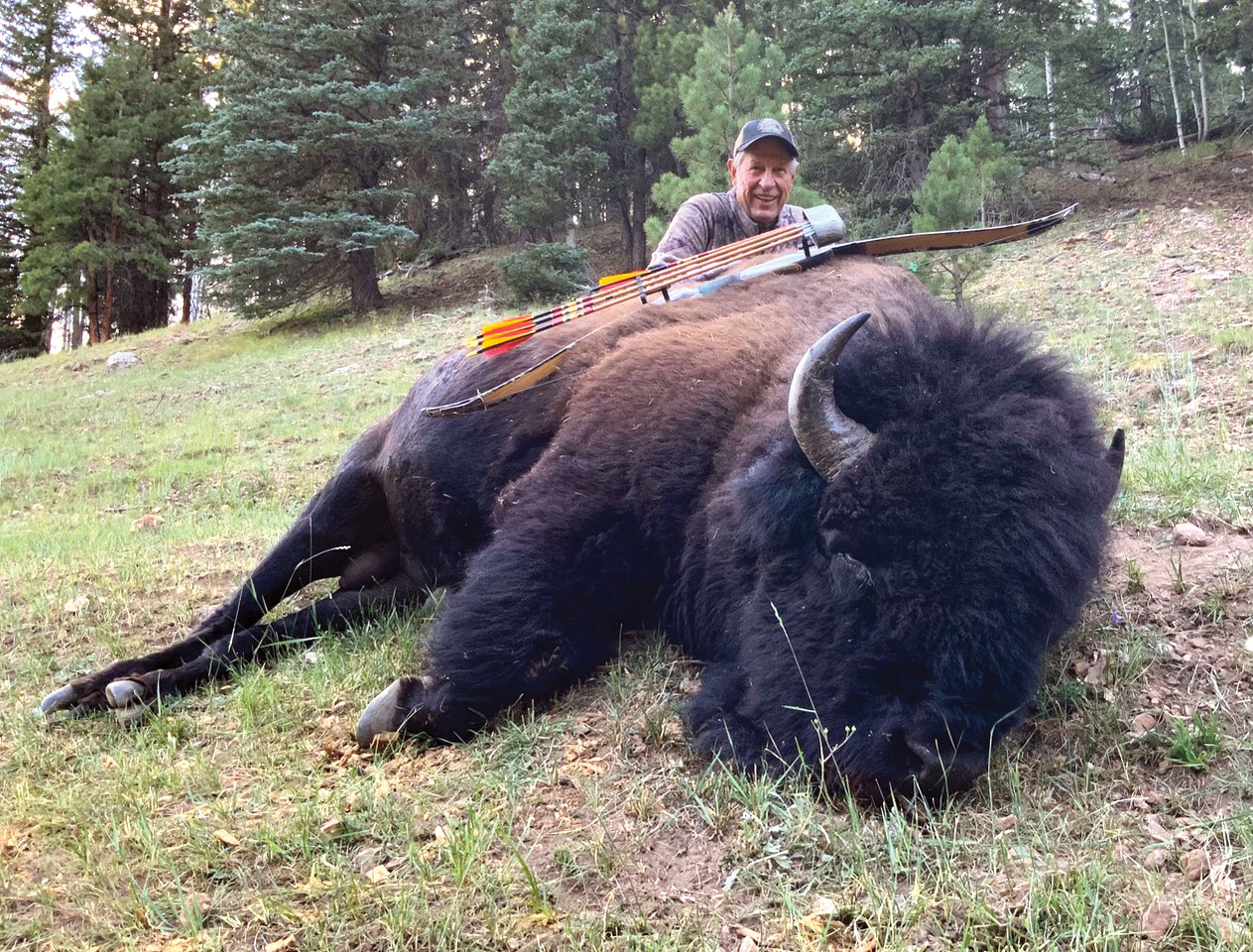
The bull went only 18 yards before he went down, his life taken by an 800-grain wooden arrow driving a single-bevel two-bladed broadhead.
Dunn had only three more days before his tag expired, but he had achieved his goal, adding one more North American game animal to the Pope and Young Club’s book of archery records.
His next, and final, Pope and Young critter would be an Alaska barren-ground caribou. So he was back at it last August, now 81 years old but with the drive and ambition of a man half—or even a quarter—his age.
An Intentional Life
Dennis Dunn has lived a singular life that’s been devoted to achievement of one sort or another. He was born in 1940 to a family of nonhunters. Dunn’s mother borrowed from her experience as a Stanford University undergrad who had taken formal archery instruction for her athletic activity.
“When I was 5 years old, my mother brought home a toy set of bows and arrows with rubber cups on the ends of the arrows,” Dunn recalls. “At age 7, Mother sent me off to summer camp, where they had real bows and arrows with steel tips. There I became addicted to the sport of bowhunting. Over the next few years, I spent my time fantasizing over how American Indians snuck through the forest with bow and arrow in hand, in quest of a deer or elk.”
An early friendship with Glenn St. Charles, the pioneering founder of the Pope and Young Club, intensified Dunn’s interest in archery. His first two bows were recurves, one with an aluminum riser, the second a 50-pound fiberglass model.
Dunn did plenty of hunting with compounds, albeit without sights attached for aiming. But in 2006, he returned to his traditional-archery roots and mainly carried his Whitetail Hawk, built by Steve Gorr’s Cascade Archery. At Dunn’s 31-inch draw, the bow pulls 60 pounds, a substantial draw weight for archers even half his age.
Hunting might be Dunn’s life calling, but he’s had a career in politics—he served as a high-ranking officer of the Republican National Committee (for a time he was married to six-term Washington congresswoman Jennifer Dunn). He also had a career in public policy, serving as director of international trade organizations. He’s worked as a securities broker. He writes poetry as well as books and is a devoted patron of the opera. He now lives in Sun Valley, Idaho.
Bowhunting has been the throughline in his life, and he reflects on his accomplishments with a sense of both achievement and restlessness. Why does he pursue it with such intensity and purpose?
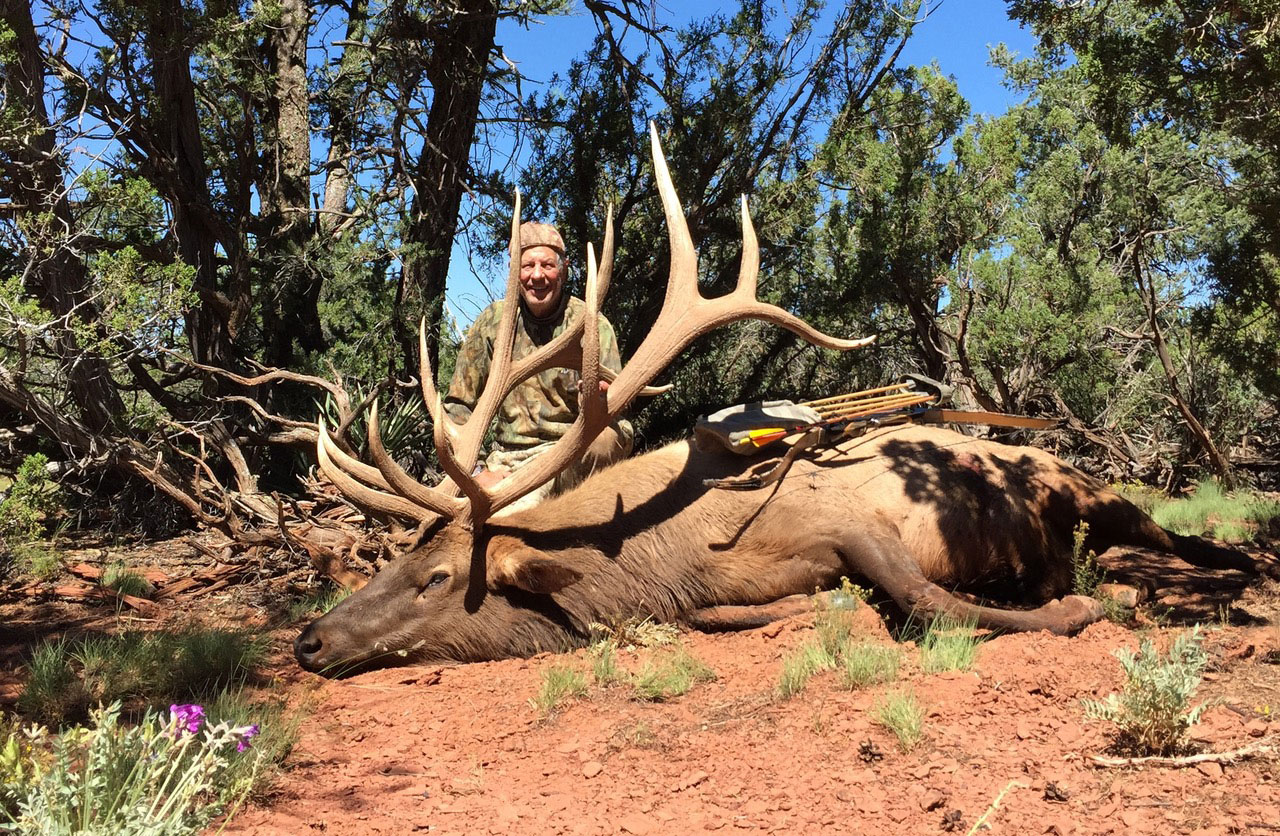
First, his audacious achievements did not necessarily start as lifetime goals. Instead, “My hunting career has consisted of a series of smaller goals, used like stepping-stones to progress from one to the next,” he says. “With each success, my confidence would grow, and I would focus my sights on a new goal, a different species, or a bigger buck or bull. Eventually, as my dreams began to coalesce around ever more ambitious goals in the bowhunting world, I finally came to realize that there was virtually nothing I could not achieve provided I was willing to work hard enough, be patient enough, and make the sacrifices necessary to get there.”
That pursuit of personal growth is the real, intangible trophy of his career as a hunter. But Dunn recognizes that the world is built on expressions of overt achievement—trophies—and his collection of record-book, traditional-archery kills has elevated him to the top of the bowhunting pantheon. This fact hasn’t changed his perspective on what a trophy animal means.
“A trophy is a very personal thing for me, as it is for anyone,” says Dunn. “For me, the experience is the trophy, the opportunity to hunt the most remarkable landscapes on Earth. But the first animal I ever took with a bow was a squirrel, and that was a trophy. My first mule deer—a doe that I shot when I was 24—was a great trophy.”
Pursuit With Purpose
Dunn doesn’t meander in the mushy margins of defining a trophy. For him, the definition is simple: an animal that’s better, as defined by dimensions of antler or skull, than those of that species he previously killed.
In other words, it’s a measure of personal improvement, no matter how you quantify it. “My father was a high jumper at the University of Washington,” says Dunn. “I can’t recall what he cleared—something over 6 feet—but I remember him talking about what a challenge it was. How he trained, and every day he tried to improve his personal best. For me, that’s what hunting is. It’s about the challenge and hope that I can clear the bar that I’ve set for myself.”
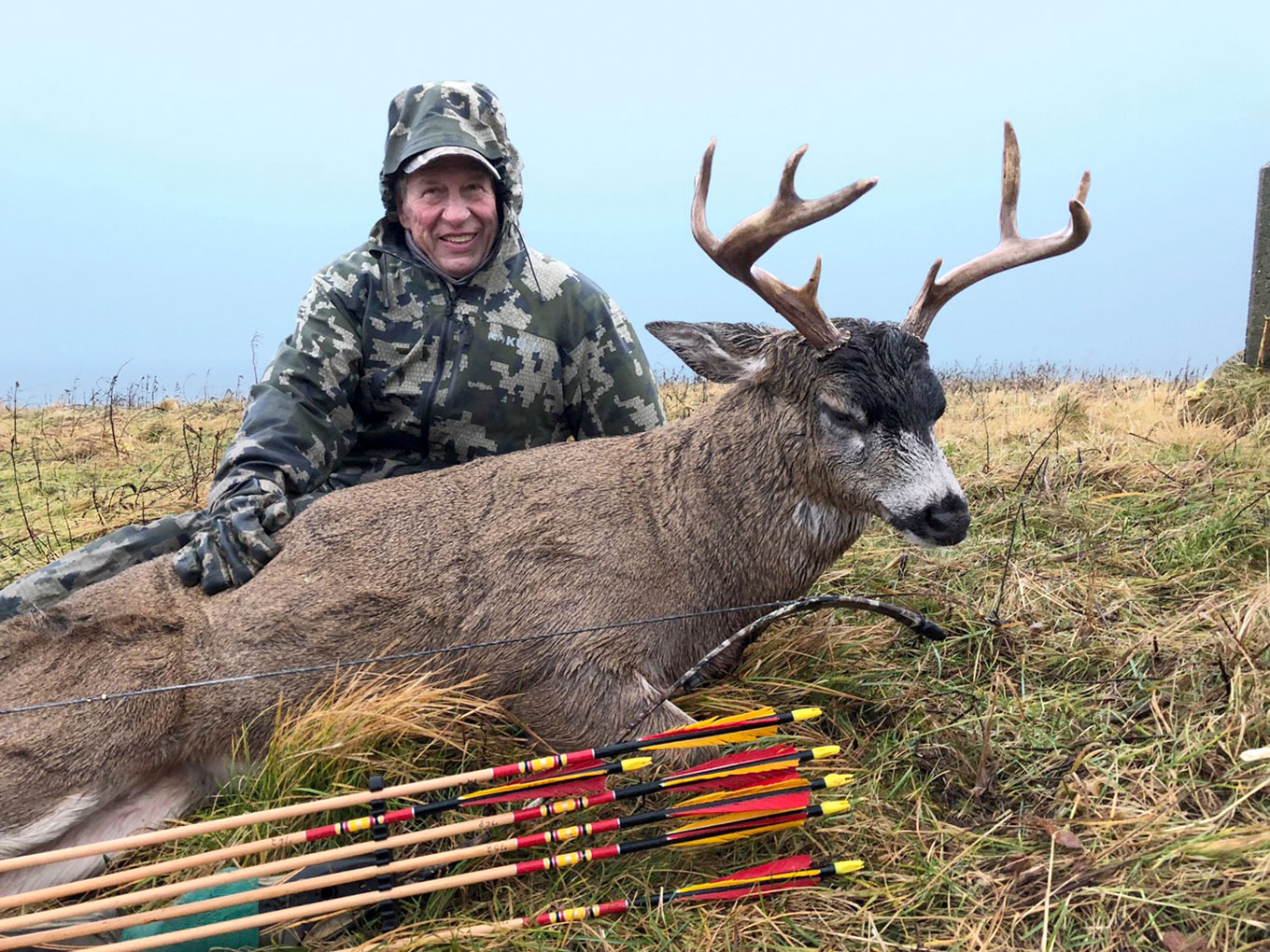
Once he achieved his goal of killing all 29 North American big-game species with traditional archery equipment, Dunn set about raising the bar for his next goal: taking specimens that make the Pope and Young record book.
When Dunn arrowed that massive Kaibab Plateau bison—which just misses the Boone and Crockett record book but easily makes the Pope and Young book—he was well on his way to “upgrading” all of his North American critters. His last remaining “upgrade” is that Alaska barren-ground caribou.
“All animals were taken using purely instinctive shooting,” says Dunn. “No archer has yet accomplished that goal. Only five have done so with compound bows and yardage sight pins for aiming.”
Dunn’s accomplishments are memorialized in his 504-page book, which weighs more than 9 pounds and is equal parts natural history overview, chronicle of hunting from 1964 through 2004, and ruminations on what it means to be a trophy hunter.
More specifically, Dunn is a trophy hunter who greatly limits his lethal range. This is, as pioneering bowhunter Howard Hill put it, “hunting the hard way.”
“The stickbow hunter knows that the odds are stacked against him, but he embraces the hardship,” says Dunn. “You learn to enjoy the challenge of willfully limiting yourself to a weapon of limited range in order to make the contest more equal. And when you accept that you will only release an arrow at a specimen that’s at least larger than the previous one you killed, then you understand that you may be looking for an animal you will not find, or if you do, it might not be killable.”
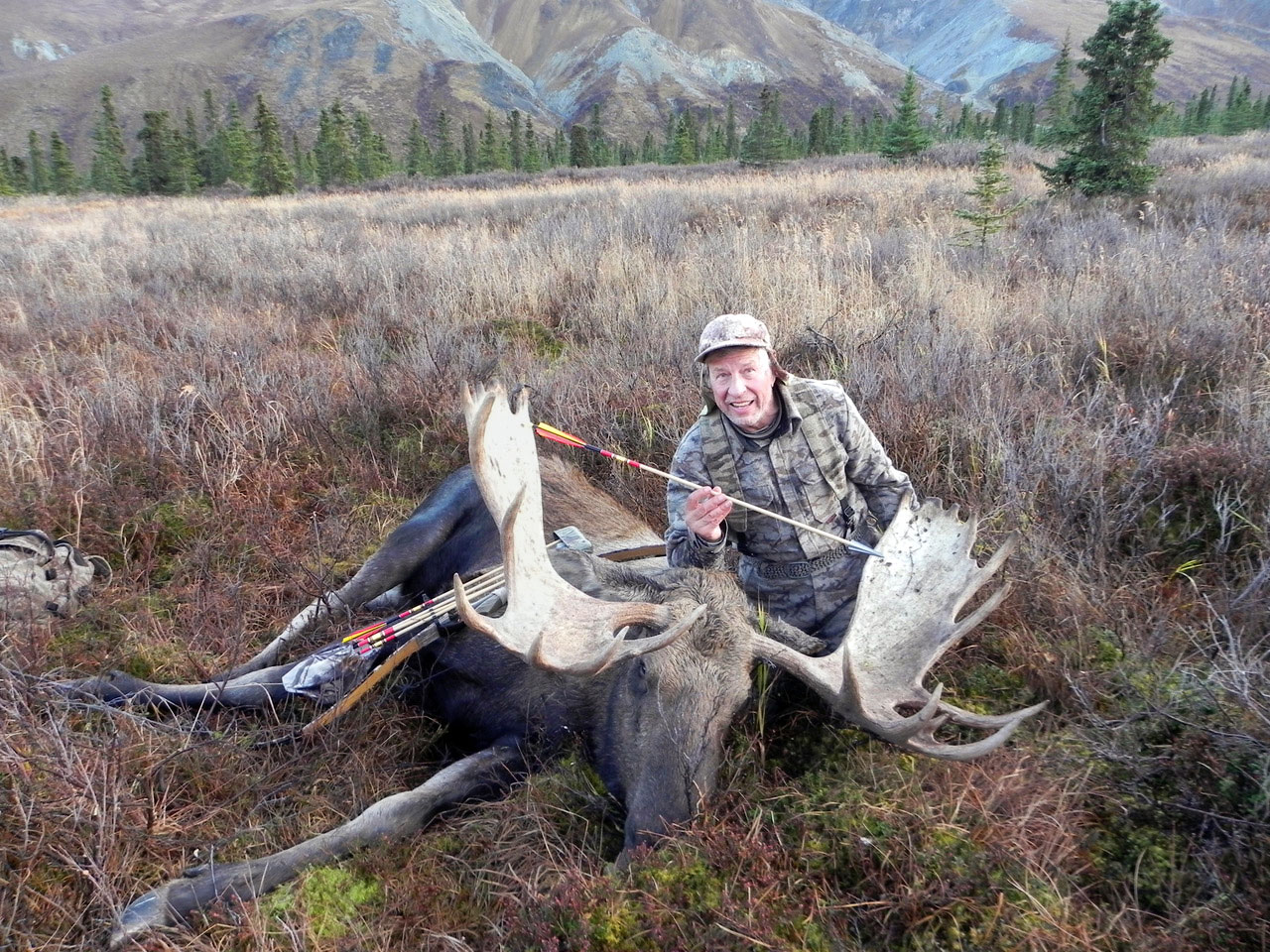
But Dunn counts close encounters as nearly equal to kills. Given his incredible bowhunting success, most would expect Dunn to be an elite archer, but that’s not necessarily the case.
“I’m not a very good shot with a bow, so I’ve honed my hunting skills to the extent that I’ve become a very good stalker,” he says. “When I voluntarily limit myself, I give my quarry all the advantages, and an old male at the end of his life has significant advantages, of keen smell and hearing and sense of movement as well as intimate knowledge of their terrain.
“All I have are my wits and intelligence, but using them to get so close, and so far inside an animal’s fight-or-flight perimeter, makes it possible for me to connect with my Paleolithic ancestors, and to observe Mother Nature in a way few others can. I thus become part of that natural world.
“Even if I don’t find the quality buck or bull I’m searching for during an entire week of hunting, if I experience a very close encounter with a doe deer or cow elk or moose or caribou, that produces nearly as big a thrill for me as arrowing the mature male animal I was seeking.”
Dunn’s decades of hunting every species from musk ox and brown bears to Coues deer and tule elk have taught him that careful hunters have one weapon that can be just as deadly as a modern firearm: patience.
“I have time, patience,” says Dunn. “The biggest difference between a successful and unsuccessful bowhunter is patience.”
But Dunn, who turns 82 in May, is aware that while he has talent, resources, and patience in spades, he is running out of mortal time.
He has one more goal to achieve before he can turn his attention to other benchmarks, which might include more publications detailing his remarkable experiences traveling the continent hunting big game.
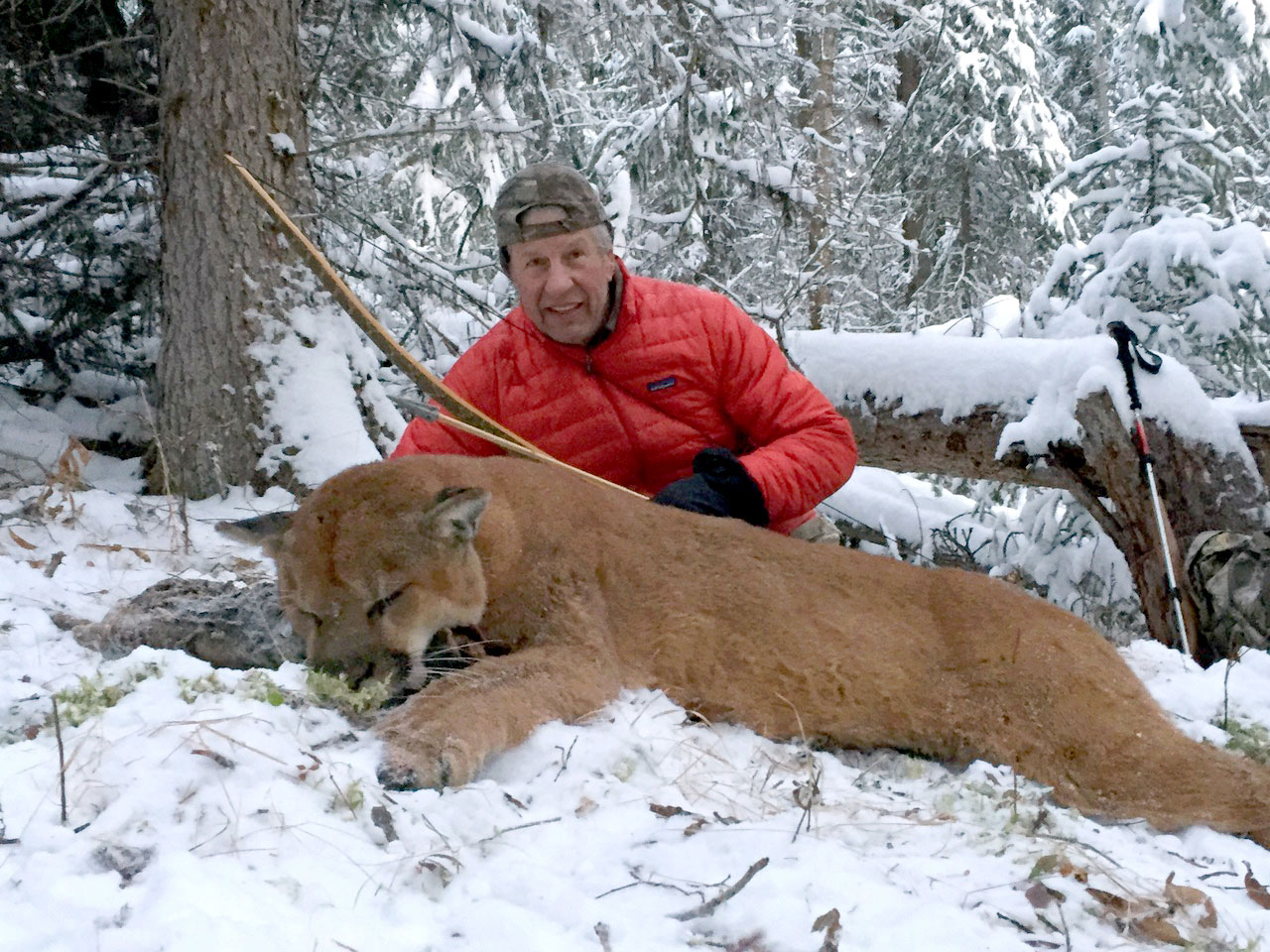
That trophy Alaska barren-ground caribou eluded him last August. As he was homing in on candidate bulls over the course of 25 days in the bush, he tore his calf muscle. For a few days he shrugged off the injury, hobbling around the muskeg. But the torn muscle kept him from getting within stickbow range of a target bull.
Dunn finally conceded and flew home for medical attention. But he intends to be back on Alaska’s tundra in the fall of 2022, his eyes firmly fixed on the bar he has set for himself.
“I intend to hunt until I drop, in order to have lived the fullest life possible, as close to Mother Nature as I could get, and so that I might better understand and more fully appreciate the limitless number of miracles that God Almighty has created on this planet. But I realize that I am now very much in a race with Father Time.”
This story originally ran in the Trophy issue of Outdoor Life. Read more OL+ stories.
